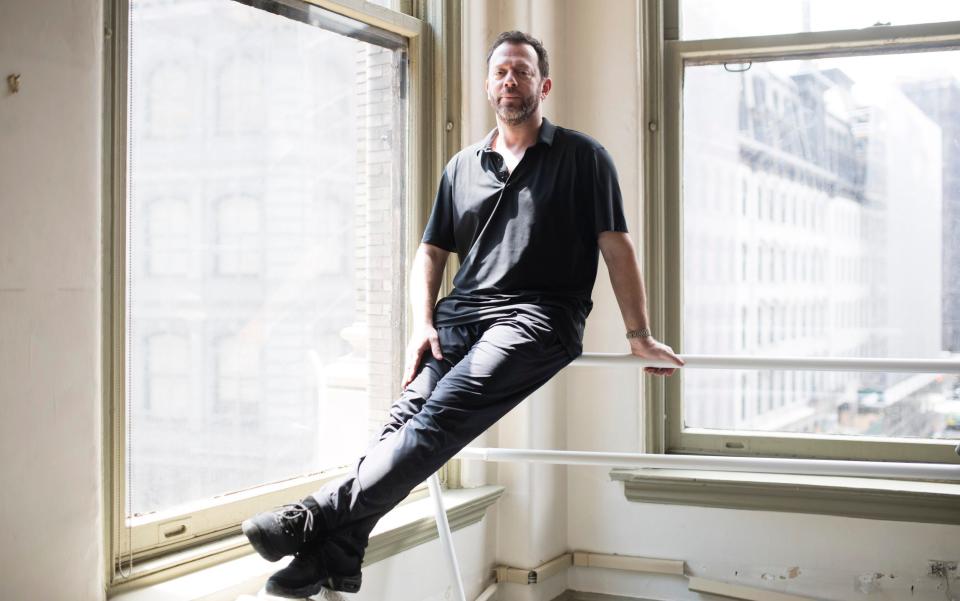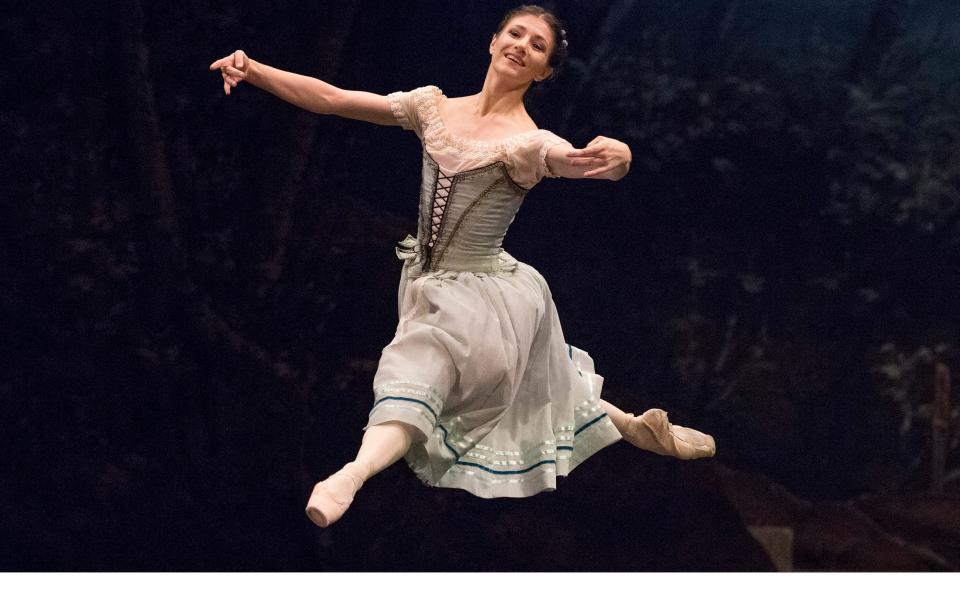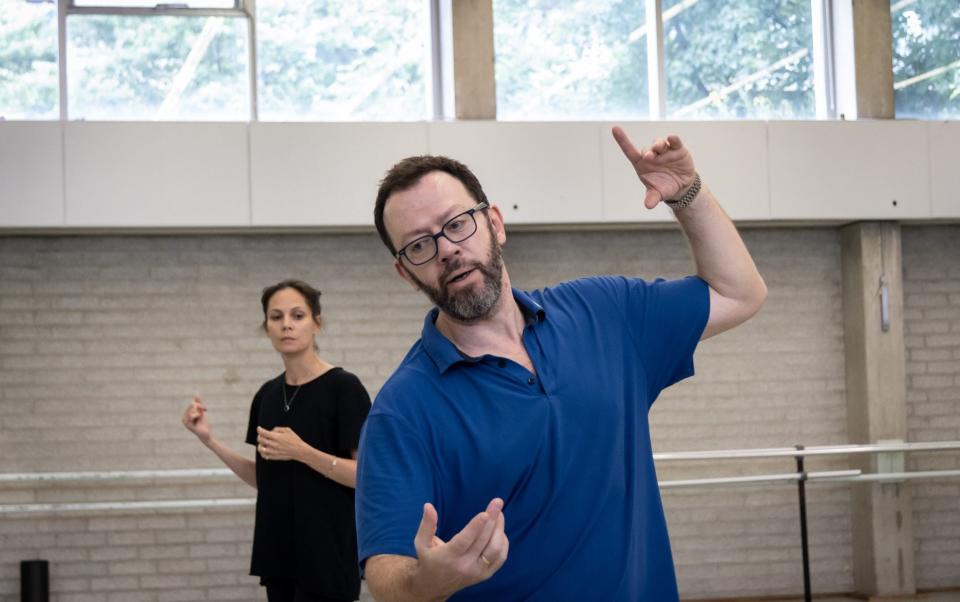Alexei Ratmansky interview: ‘I’m not sure Ukrainians will want to sit through Swan Lake ever again’

“Ballet has a Russian heritage,” says Alexei Ratmansky. Given the current situation, the 53-year-old choreographer and former artistic director of Moscow’s Bolshoi Ballet is “not sure if the Ukrainians will ever want to sit through the Russian classics again. They may never want to see Swan Lake, The Nutcracker or Sleeping Beauty ever again. Of course, Tchaikovsky and [original choreographer] Petipa have nothing to do with the horror that we see now. But it’s like Jews not wanting to listen to Wagner.”
He still sounds shell-shocked, speaking on the phone from The Hague, where he has spent the past three days rehearsing a new production of Giselle with members of the United Ukrainian Ballet Foundation, which is coming to the London Coliseum for five days in September.
Five large dance studios and classrooms at the former Royal Conservatoire in The Hague have been converted into bedrooms for the company, supervised by former Dutch National Ballet ballerina Igone de Jongh. Most of the dancers are recent refugees. Some have brought children, whom Ratmansky is relieved to hear “playing, quite happily, in the building”.
Ratmanksy believes their training has given them the skills to keep going. “Dancers are strong people,” he says. “Disciplined. They know how to push harder. They don’t allow themselves to be weak. That’s what we learn in ballet school: to tolerate pain, and deliver.”
Before Russian tanks rolled into Ukraine, Ratmanksy had been working with the Bolshoi on his new ballet The Art of Fugue, set to Bach, which was supposed to premiere on March 30.

But on hearing news of the invasion, he immediately checked out of the Moscow Metropol Hotel, where he was staying, and flew back to his home in New York. “I was in shock in the taxi to the airport,” he recalls. “But I had to go. In Russia, all the major art institutions are sponsored by the state. And now the profits from those box offices are used to kill Ukrainians. In a sense, they contribute.”
Ratmansky was born in Russia, but grew up in Kyiv and considers himself a Ukrainian. His elderly parents are still in the country, his wife (and regular collaborator) Tatiana is Ukrainian, and he began his own career as a dancer with the Ukrainian National Ballet from 1986 to 1992, rising to the role of principal.
“I performed in Mariupol at an international ballet festival with my wife in the mid-1990s,” he says. “And it’s gone. It’s hard to imagine how much pain this is going to leave and how people will deal with that in the future. Will we be able to forget about it? Will we be able to occupy again these places where so many died?”
During his tenure as the Boshoi’s artistic director (2004-08), Ratmanksy notes that, despite the company’s close ties to the Kremlin, the work “never felt political. Of course, it was. But I didn’t have to stage patriotic shows; I wasn’t given orders. It was very free, artistically.”
But he “sensed a change of mood” after the Russian invasion of Georgia in 2008. “For me and my family, it was clear that politically things were going the wrong way,” says Ratmanksy. “It was going backwards. There was something scary in the air.”
It was at this point, Ratmansky adds, that he realised “He [Putin] was playing a game. A very long game. It’s very clear now that he was planning to get back all the old Soviet territories.”
In March, Mikhail Baryshnikov, the leading male classical dancer of the 1970s and 80s (who defected from Russia in 1974), said that Russian artists should not be expected to speak out against the Putin regime.

But in a Facebook post, Ratmansky wrote that he found it “hard to agree with Misha”. He pointed out that in 2014 more than 500 well-known Russian figures in the arts, including major ballet personalities, signed a letter of support for Putin’s annexation of Crimea.
“After this letter,” Ratmansky wrote, “every performance or any public action of these 500 could be seen as an act of propaganda… It is precisely because of the support of the most visible figures of Russian culture that Putin gained his unlimited power and now is using it against humanity in this bloody war that is destroying Ukraine.”
In his rehearsal room in The Hague, Russian-speaking Ratmanksy tells me that he is trying to speak Ukrainian properly for the first time in his life. “I’m a little shy to speak it now with the dancers. I’m embarrassed to make mistakes,” he admits. “My vocabulary is very poor. But I want to try. My 24-year-old son, who never spoke Ukrainian, now texts me in Ukrainian.” A long sigh. “Everything Russian is painful to me at the moment. Even though it’s a part of me. It’s part of my identity. My family is half-Russian. But the war gave me a new identity. I’m Ukrainian now.”
The dancers have certainly been inspired by Ratmansky’s involvement. Polina Dzhurza is a member of the corps, who left Ukraine a few weeks after hearing about this “amazing project”.
“After so many months of worry and fear, we know how lucky we are to be safe and working,” she says. “It’s not perfect. We are squeezed. But when we dance the worries disappear and we are happy. To have Alexei and his wife creating this Giselle for us makes us feel very honoured and special. We’ve gone from the misery of war to being useful humans, respected and respectful.”
Ratmanksy believes this is a great opportunity to show the world just how much talent has always resided in Ukraine, whose dancers he feels have “often, undeservedly, been in the shadow of the big Russian companies, the Mariinsky and the Bolshoi, in the eyes of the West.”
He explains that “The group we have now, they’re not the National Ballet of Ukraine. They’re from all over. We’ve got dancers from Donetsk and Kharkiv and other cities. We’re learning about each other.” (The line-up also includes the Romanian former Royal Ballet and English National Ballet star Alina Cojocaru.)
Premiered in Paris in 1841, Giselle is one of the few ballets in what Ratmanksy refers to as the “narrow classical repertoire”, whose roots lie outside Russia. He hopes that performances will bring some form of healing, yet he fears that the classics of Russian ballet may vanish from stages for years to come.
“Because I don’t know how we go on with them,” he says. “I’m so conflicted. These stories are part of my soul. This is not just a job, it’s a passion for me. And yet I’m fighting it. I need time to find the answers.
“For me, the greatest shock was the lack of protest in my country. I was hundred per cent sure that in the next few days millions of Russians would come out and stop what Putin was doing. And it didn’t happen.
“That was the biggest disappointment, the hardest moment of my life,” he adds. “It’s really a moral catastrophe, it’s a horrible, horrible moment in the history of Russia, in the history of Russian culture.”
TELEGRAPH EXTRA
Priority booking: the United Ukrainian Ballet’s ‘Giselle’
‘Giselle’ will be at the London Coliseum from Sept 13-17. Telegraph Subscribers can jump the queue with priority access tickets to Giselle to raise money for the Disasters Emergency Committee (DEC) Ukraine Appeal and the United Ukrainian Ballet Foundation: telegraph.co.uk/extra-offers
